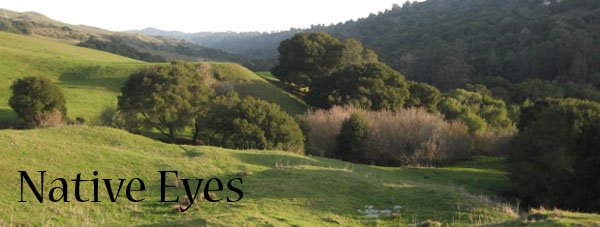
 For this Tuesday’s fire, we decided to try for a hand-drill coal using a California Mugwort stalk spindle harvested from Cloverdale Ranch. The sun was setting, the sky was dimming, the temperature dropping, humidity was climbing and it had been raining for days. In this challenging environment, we discovered that cooperative work and doug fir pitch on one’s hands can make even the most unlikely hand-drill scenario yield a coal. It was a lot of work, and by the end we all sported blisters on our palms, but we had our first ever native materials hand-drill fire.
For this Tuesday’s fire, we decided to try for a hand-drill coal using a California Mugwort stalk spindle harvested from Cloverdale Ranch. The sun was setting, the sky was dimming, the temperature dropping, humidity was climbing and it had been raining for days. In this challenging environment, we discovered that cooperative work and doug fir pitch on one’s hands can make even the most unlikely hand-drill scenario yield a coal. It was a lot of work, and by the end we all sported blisters on our palms, but we had our first ever native materials hand-drill fire.We started the next day with a bird sit, and since I knew the day would be fairly easy, centered on crafting our drum heads, I decided to get up early. I got to my sit spot well before the dawn chorus of birds or people, with the first light just touching the eastern sky with indigo. Coyotes yammered in the distance, and a Saw-Whet Owl called nearby, but otherwise the meadow was silent.
As the east lightened, a wave of bird alarm chips moved from north to south over the slope, and then silenced. Seconds later human voices rose from Commonweal Gardens in a dawn wake-up song. Then the same sparrows that woke up chipping in alarm, voicing concentric rings of the waking camp, burst into their own dawn song. Song sparrow and human voices together filled the meadow, and then fell silent again.
For the rest of the day Native Eyes worked on our drums while RDNA worked on basketry.




We started by cutting out rawhide drum skins, using our own drums frames as the patterns and leaving a half- to one-inch margin around the outside.

Then we cut more lacing. We figured out an easy, fast, two-person method.

We cut slits in the drum skin margins, four per side. Then we started lacing the drum skins onto the frames, weaving a single long strip of hide through one hole, then across the drum to another, and then back across again, bouncing back and forth in an hourglass pattern.

When the lacing was all in place, I stretched the skin as much as I could by hand. Then I began tightening the lacings, going around one by one and pulling each tight. I did this three times, until it seemed like the straps might break if I tightened them any more.

I still had a long length of lacing, so I started binding the lacings into a central, cross-shaped handle. I started by grouping eight lacings together and binding them from the center outward, creating a flared handle of rawhide, then winding the lacing back on itself toward the center. I did the same for each group of eight lacings, finishing with a cross of rawhide bindings around the drum lacings.

I let the whole thing dry slowly, sitting on my naturalist shelf in my room. The finished drum has a resonant and pleasing voice.
















































